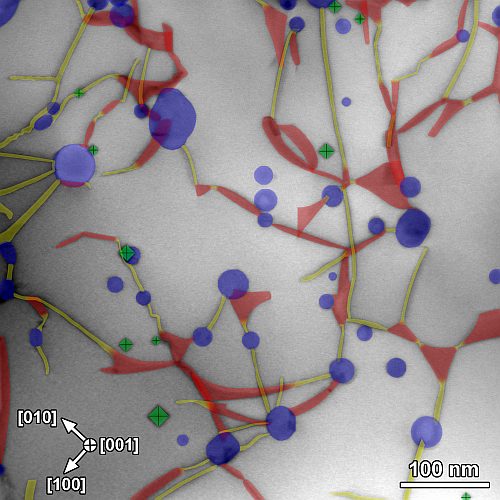After successfully finishing doctoral program at the IPM, CAS (accredited together with FME BUT in Brno), Dr. Milan Heczko joined as a post-doctoral researcher well-known and very successful group of Prof. Michael J. Mills at The Ohio State University in USA. In collaboration with NASA Dr. Milan Heczko was part of a research team which developed, characterized and tested new revolutionary alloy.
The alloy combines several modern concepts of metallurgy and design of structural materials: (1) Integrated computational materials engineering (ICME); (2) Multi-principal element alloys (MPEA); (3) Oxide-dispersion strengthening (ODS); and (4) 3D printing or additive manufacturing. The alloy with the name NASA GRX-810 is designed for conditions of loading in extreme environments, where it exhibits extraordinary properties, especially mechanical strength, creep and oxidation resistance under tested temperatures up to 1093 °C. The manuscript published in the most prestigious scientific journal in the world NATURE (IF = 69.504) uses example of NASA GRX-810 alloy to demonstrate success of new revolutionary approach to design structural materials. This has potential of important implications to a wide range of technological issues human society currently faces.
Congratulations! We are also pleased that Dr. Milan Heczko is planing to return and continue with this unique research subject in collaboration with American institutions at IPM CAS as a principal investigator of proposed Junior Star project, which is currently submitted into annual competition for research funding of the Grant Agency of the Czech Republic.
Related topic focused on the development of materials for extreme conditions prepared by additive manufacturing is currently under investigation by team of IPM CAS under supervision of Dr. I Šulák and Prof. T. Kruml within the international project topAM funded by European Union (H2020).
Photo above: Dr. Milan Heczko in front of scanning transmission electron microscope Thermo Fisher Scientific Themis-Z equipped with corrector of condenser lens system spherical abberation

Colored BF–STEM diffraction contrast image (DCI) (electron beam is parallel with [001] zone axis of matrix) reveals complex initial microstructure of GRX-810 alloy. Various defects are interacting with the oxide particles (blue). Network of 1/2<110> dislocations (yellow) which are mostly dissociated into observable intrinsic stacking faults bound by 1/6<112> Shockley partials. Dissociated dislocations (red) mutually interact and form numerous extended stacking-fault node configurations (red) and stacking-fault tetrahedra (green).
Reference to NATURE manuscript (Open Access).
Reference to press announcement/ article at the NASA website.
Reference to press announcement/article at the CEMAS, Ohio State University website.



